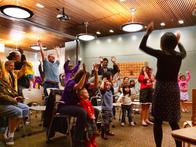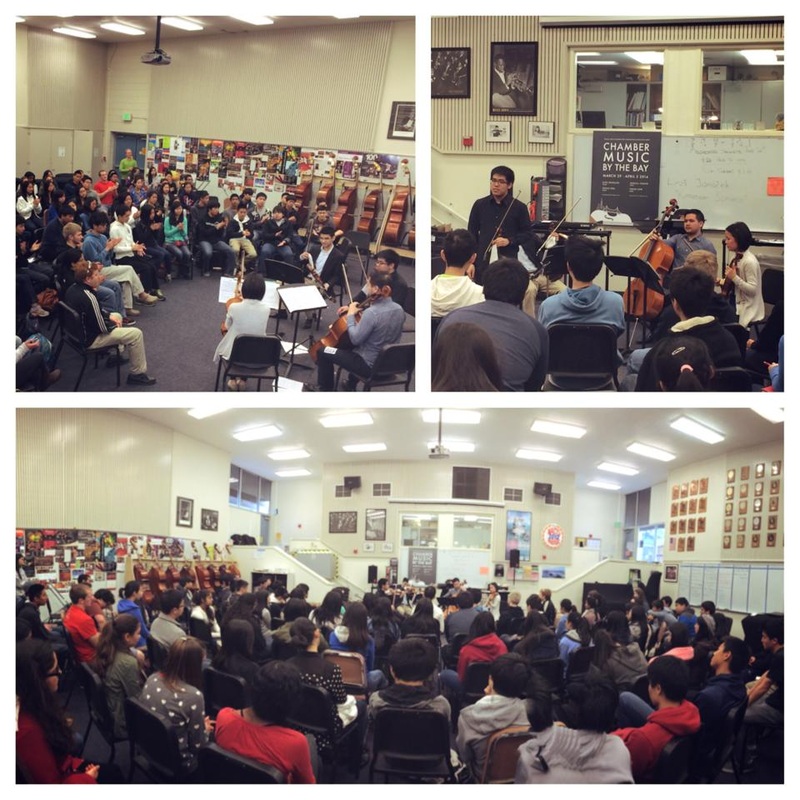|
Aaron Rosand on recital programming: http://www.theviolinchannel.com/vc-masterclass-aaron-rosand-curtis-institute-lost-art-violin-recital-programming/
There's a lot on that page that I disagree with. But instead of arguing with him point-by-point, I thought I would explain my own approach to the art of programming. 1. COHESION. Something must hold the recital together. On recent programs, I've used theoretical concepts (polystylism), dates (music after WWII), and even a cultural narrative (Japan grapples with Western influence) to tie a group of works together. "Alex's favorite pieces" only sells well to my friends; it's hard to market a program that a random piece generator could come up with. 2. CONTRAST. Except under unusual circumstances, I prefer to present contrasting works--no all-Minimalist programs from me! Even when choosing works from a particular time period--say, 1942 to 1952--I look for composers whose differences in style belie the historical proximity of their compositions. Luckily for me, this is very easy to find in the twentieth century! Antithetical to my vision of contrast is a program that consists of three or four violin sonatas. Also antithetical to my vision of contrast are the formulaic recital programs of the past--unless this is done in homage to those old recital programs! I know that any list should have at least 3 items, but I've run out of relevant ideas already. So my last point has not to do with programming, but with recital performance: 3. MEMORIZATION. Not necessary. One should not be glued to the music, but I don't see any reason to show one's memorization skills. (I have on occasion performed from memory, but with music in front of me. That is, I gave the appearance of reading music, while actually performing from memory. Why? To show solidarity with the pianist, who could not memorize as easily as a violinist.) (And why didn't I just use the music? Two words: page turns. And two more words: were impossible.) I do concede occasionally performing from memory, but I am more likely to do this with a contemporary work (Lutoslawski's Subito and Schoenberg's Phantasy) than with a Classical work. These are my thoughts as of today, April 29, 2014. I wouldn't be surprised if I had a completely different approach in 5 years. But this is a snapshot of NOW.
0 Comments
 I spent last week in the Bay Area, where I grew up. Far from being a vacation, though, it was one of the busiest weeks of my year! I was in town with Chamber Music by the Bay, an outreach quartet founded by old friend and violist Jessica Chang. Every day we hit several schools and/or libraries, sharing our love of chamber music, both as a performer and as an active listener. (I had many opportunities to hone one particular line about Tolstoy's novella The Kreutzer Sonata: "He came back in the middle of the night, and walked in on his wife... [dramatic pause] ...and the violinist... [even more dramatic pause] ...having an intimate... [most dramatic pause] ...dinner together." [groans from the students.]) Across several different presentation, we covered melody, harmony, program music, and how to dance like a crazy person. This isn't my usual audience, and these days I'm more likely to play something post-WWII than pre-French Revolution (another big part of our outreach was Haydn.) Still, it was great to engage with so many different groups of people, from toddlers to seniors. I don't think I have the energy to do this 52 weeks a year (especially the instrumental petting zoo!) but one or two intensive weeks is perfect! A part of me does wonder if they'll ever be ready for Schnittke's Second Violin Sonata, though... |
These posts are more stream-of-consciousness than polished bits of prose. I'm not doing much proofreading, so please excuse any typos!
Archives
July 2014
Categories |


 RSS Feed
RSS Feed